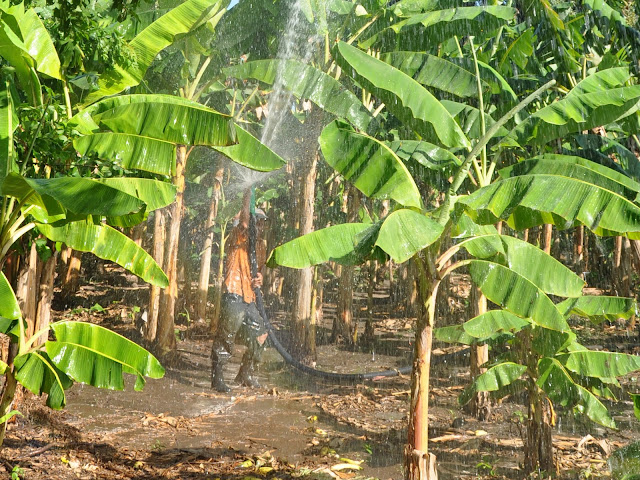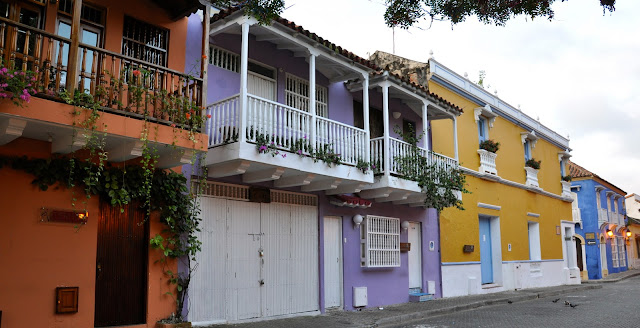The next stop in our whirlwind tour of Central America is Granada. We arrive knowing it's a colonial town and the tourist hub of Nicaragua, which is helped by being only an hour from the notoriously dangerous capital of Managua. We've had our fair share of colonial towns by now, but each has it's own feel. Granada is very small and we see a lot of the town in an afternoon checking out the sights.
 |
| Barber where George indulges in a $2 haircut |
 |
| Happy cows |
With only a short time available to us, we decide to hire bikes and venture out along the shores of Lago Nicaragua. We find ourselves biking down a dirt road through farmland, howler monkey laden jungle and swamps full of crocodiles. The few people we pass are carrying machetes and we wonder if we're in the wrong place (the 'map' provided by the bike hire man is light on details). Our fears are eased as everyone greets us with big smiles and a friendly 'buenas tardes'. At some point the road becomes a track and petered out into a murky lake. I decided it looked inviting but a few steps down things took a treacherous turn and the slimy steps got the better of me. After rag-dolling down a few steps I find myself in waist-deep water while George tries to not to laugh. It was a squelchy ride home.
 |
| Peligroso. Mucho. |
 |
| Streets of Granada |
 |
| Hammock making in progress |
Somewhere on our travels we have heard of the Somoto canyon. It's right on the Honduras border and George has his heart set on swimming down it. We bus from Granada to nearby Esteli in cowboy country - the primary industries here are beef and tobacco. It is also the place where we find the best street food of our trip so far - a delicious meal of spicy bbq pork, rice, beans, salad and tortillas that comes in at just under $2 each. Needless to say, we return there the next night for dinner.
It is also the place where we have our best chicken bus experience to date. Chicken buses are something of a legend to travelers in central america. We've ridden a few of these ex-american school buses (picture the magic school bus) along the way but nothing tops this experience. Jammed in the rear door when the bus slows at our stop, we know it's going to be packed. We didn't know we'd spend the next hour hanging on for dear life with about 10 others out the open back door.
 |
| More happy cows |
All in one piece, we are happy to arrive at canyon entrance. We see 2 other travelers with a guide and ask if we can tag along with them. They're more than happy, as is their guide for the extra business. We set off armed with life jackets, a dry bag and our new $2 nicaraguan crocs. We are grateful for these as we walk to the canyon through the dry and rocky countryside. Coming down to a pretty tame looking stream with cows happily grazing beside it, at first sight it doesn't appear like my idea of canyoning… We follow our guide down the river. The banks soon turn to cliffs and close in around us and the water is deeper and faster. The highlight for me is jumping off an 8m cliff (see below). Though maybe not for George as he waits in the freezing water below while I take my time deciding whether it's a good idea or not.
 |
| Never thought I'd be so happy to be back in freezing water |
 |
| Collecting an errant football from across the river |
You may have noticed we've fallen a bit behind. One more sleep and we are on the plane home!
The plan of bringing this up to date was struck a blow by Cuba's lack of internet (where we've spent the past 2 weeks) and our wishful thinking that our trip was never-ending. With any luck we might get further posts out at the airport. Looking forward to seeing some friends and family again soon!
xN&G



























































